Moselle Valley, Germany
Introduction
The Moselle (German: Mosel) is a river flowing through north-eastern France, Luxembourg and western Germany. The German part of the Moselle valley is famous for its spectacular scenery, picturesque towns and medieval castles. The region’s mild climate not only allows the production of wine, but also supports a large diversity of plant and animal species many of which one would normally expect to find much further south.
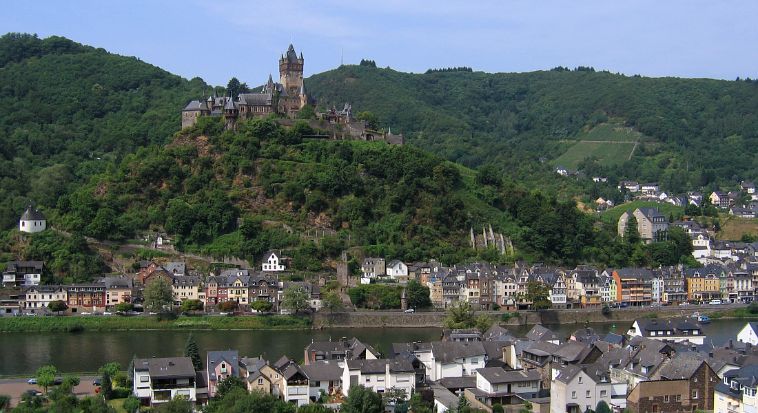
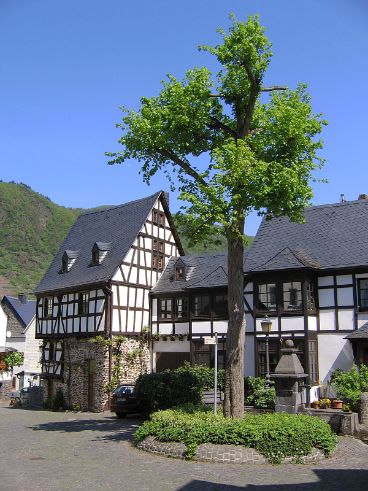
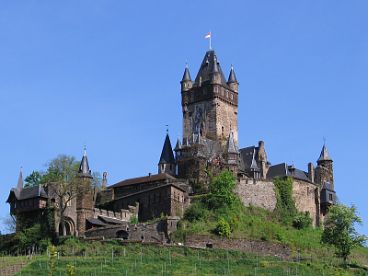
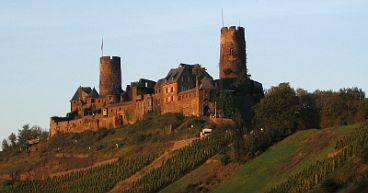
Butterflies
The Moselle valley’s mild climate supports a large number of butterfly species whose main geographic range is usually much further south in the Mediterranean regions of southern France and Italy. One such species is the spectacular Scarce Swallowtail (Iphiclides podalirius) which thrives along the steep, rocky sections of the Moselle valley where a hot micro-climate creates the necessary conditions for its survival. Scarce Swallowtails are territorial and will fiercely defend their territory against any intruders. They are also known for their ability to effortlessly glide through the air by making use of warm updraughts.
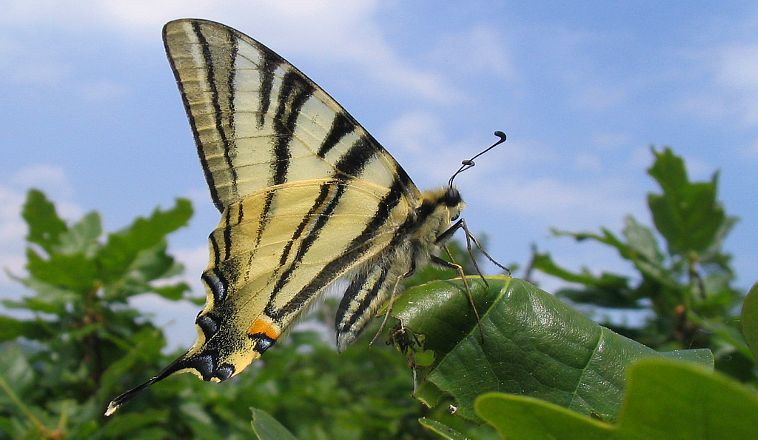
Another jewel of the Moselle valley is the Apollo (Parnassius apollo). Once widespread across Germany’s mountain ranges, destruction of its habitat has led to a serious decline of Apollo populations all over Europe. The last remaining populations in Germany are today found in the Alps, the Swabian and Franconian Jura, and the rocky slopes of the Moselle valley where this spectacular butterfly can still be seen in good numbers on warm and sunny days in late spring and early summer. The Apollo is the only European butterfly species to be protected by the Washington Convention (CITES).

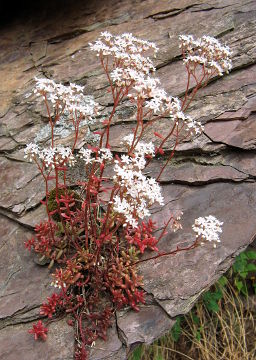
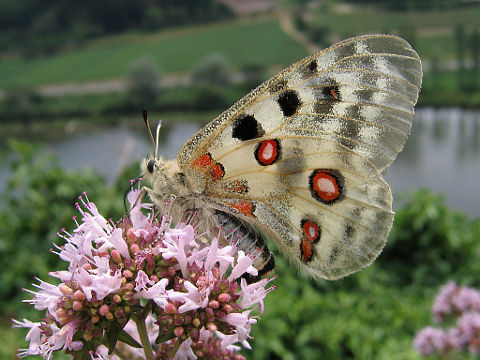
The warm, rocky slopes of the Moselle valley are also a paradise for various species of Hairstreak (Theclinae). These small butterflies are named after the short tail decorating the hind wings of most species. The first species to appear each year is the Green Hairstreak (Callophrys rubi), which is Germany’s only green butterfly and can be seen as early as April. Other commonly encountered species include the Purple Hairstreak (Neozephyrus quercus), the Sloe Hairstreak (Satyrium acaciae), and the Blue-spot Hairstreak (Satyrium spini), all of which fly in late spring and early summer. The last species of the year is the Brown Hairstreak (Thecla betulae) which is on the wing from mid to late summer.
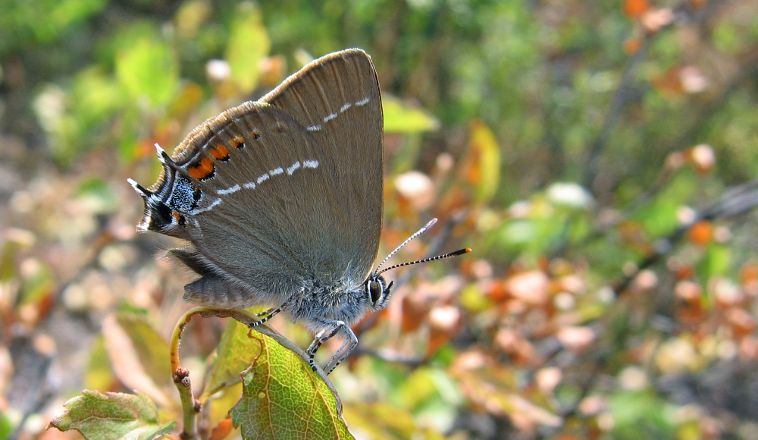
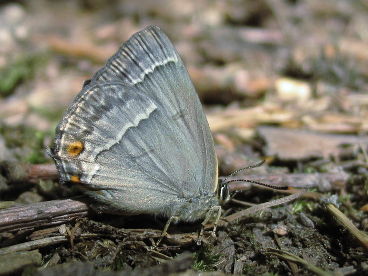
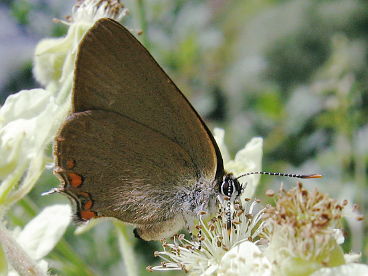
While species such as the Green Hairstreak and the Purple Hairstreak are very common and widespread across most of the country, both the Sloe Hairstreak and the Blue-spot Hairstreak are fairly local and restricted to xerothermic habitats in central and southern Germany, in particular the steep, rocky sections of several river valleys.
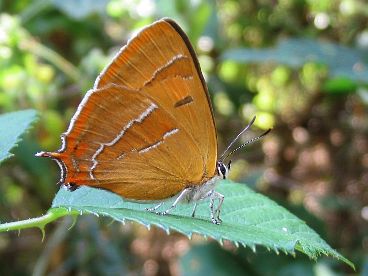
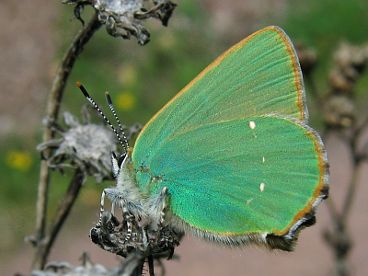
Several other rare and threatened butterfly species can be encountered along the Moselle. One of these is the Spotted Fritillary (Melitaea didyma) which is restricted to xerothermic habitats in central and southern Germany, including the south-facing, rocky slopes of the Moselle valley. The males are easily spotted thanks to their bright orange colour. They are often seen patrolling along tracks in search of females, but are extremely alert and difficult to approach. The females are not as brightly coloured as the males, but equally alert.
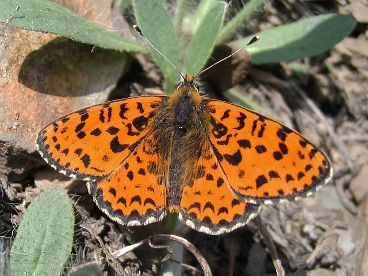
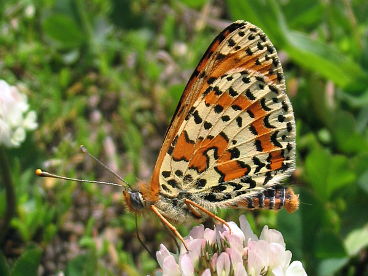
The Large Tortoiseshell (Nymphalis polychloros) is one of several species of Nymphalis that can be found along the Moselle. A typical woodland species, it is often seen basking on tree trunks where it is perfectly camouflaged once its wings are closed. A similar form of camouflage can be found in the Comma (Nymphalis c-album), which successfully imitates a dead leaf, making it almost invisible when perched on the ground.
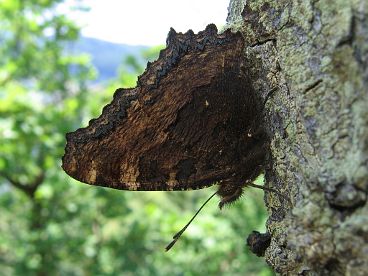
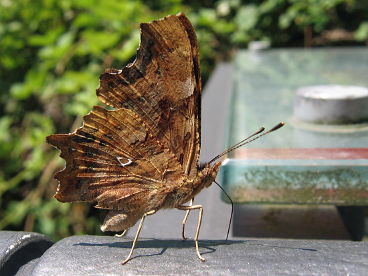
Many more butterflies are commonly encountered in the Moselle valley. Among these are several species of White (Pieridae), including the Orange Tip (Anthocharis cardamines) and the Pale Clouded Yellow (Colias hyale). Other common species include the Holly Blue (Celastrina argiolus) and the Gatekeeper (Maniola tithonus), not to mention the many well-known and super-abundant butterflies such as the Brimstone, various species of Cabbage White, the Peacock Butterfly, the Small Tortoiseshell, the Red Admiral, the Painted Lady, the Meadow Brown, the Ringlet, and many more.
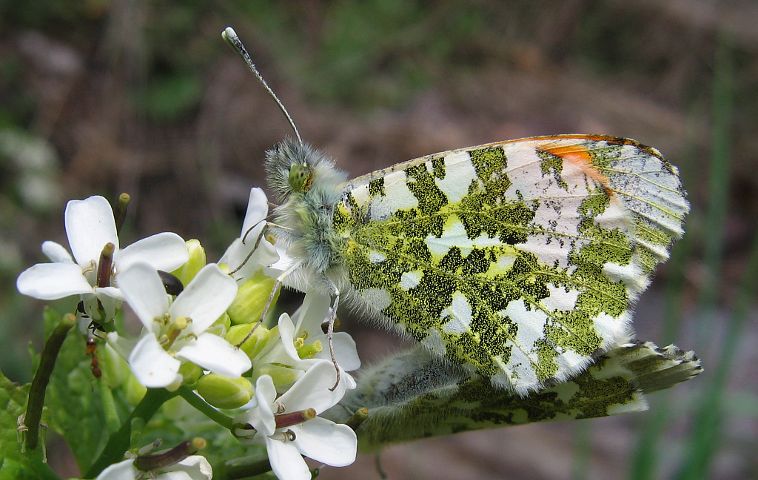
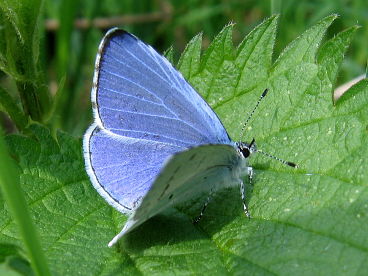
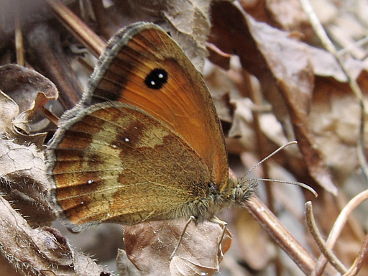
Reptiles
The mild climate of the Moselle valley also makes the region a paradise for reptiles, with several snake and lizard species known to live there. The most common snakes are the Smooth Snake (Coronella austriaca) and the Grass Snake (Natrix natrix). While the Smooth Snake is most abundant along the warm, rocky slopes of the valley, the Grass Snake prefers slightly cooler and moister habitats. The Moselle valley is also known to be the location of one of Germany’s last remaining populations of the critically endangered Dice Snake (Natrix tessellata) which requires natural and undisturbed river sections for its survival.
Among the numerous lizard species found along the Moselle valley, the most spectacular one is the Western Green Lizard (Lacerta bilineata). This large lizard can grow up to 40 cm in length and is easily recognised by its overall green colour. Western Green Lizards are mainly found across France and Italy, and the Moselle population is among the northernmost populations of this species in Europe. Other common lizards encountered along the Moselle are the Wall Lizard (Podarcis muralis) and the Slow Worm (Anguis fragilis), a species of legless lizard.
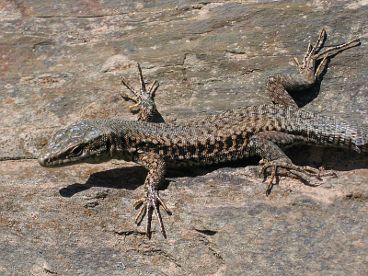
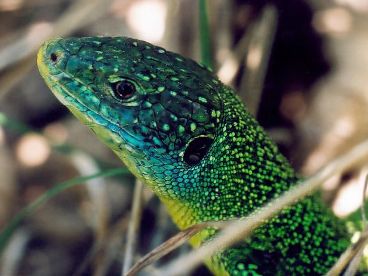
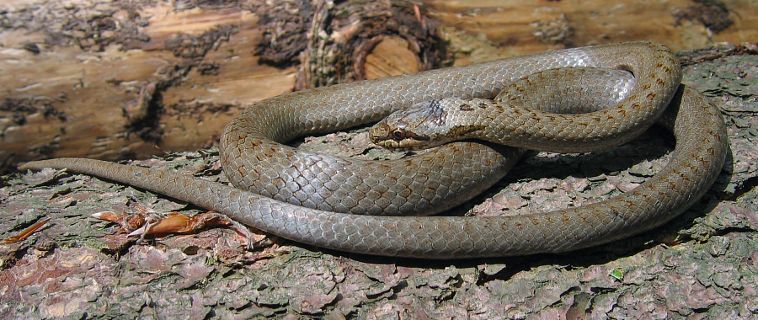
Insects
During the summer months, the air is abuzz with countless insects. This includes large numbers of beetles, among them such spectacular species as the Stag Beetle (Lucanus cervus), the Cockchafer (Melolontha melolontha) and the Rose Chafer (Cetonia aurata). The latter species is particularly abundant along the warm, rocky sections of the valley, where multiple Rose Chafers can often be seen congregating on a single flower to feed. Despite their large size they are excellent fliers and are buzzing around in large numbers on warm and sunny days.
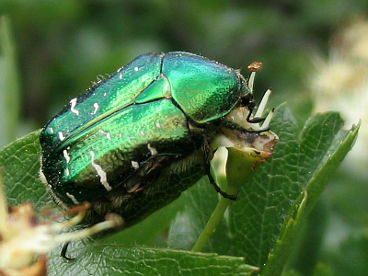
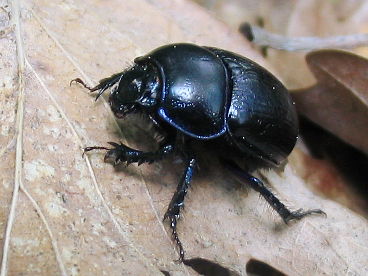
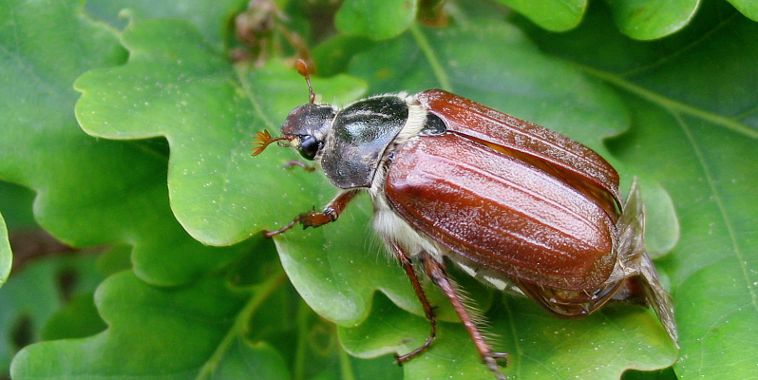
The forests and woodlands along the valley are home to several species of Dung Beetle, including the Dor Beetle (Anoplotrupes stercorosus) and the very similar Common Dung Beetle (Geotrupes stercorarius). Both are commonly seen going about their business on forest tracks and in the leaf litter. They are perhaps most notable for their ability to generate a chirping sound with their hind legs when being disturbed or picked up.
Countless other species of beetle thrive in the mild climate of the Moselle valley, a very small selection of which is shown below. Among them is the handsome Green Tiger Beetle (Cicindela campestris) which inhabits disturbed areas and is known for its agility and excellent flying skills.

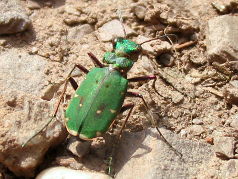

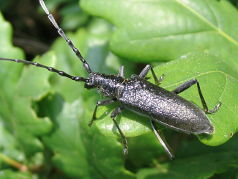
Among the characteristic insects of the Moselle valley are several notable species of grasshoppers and crickets, including the flightless European Bushcricket (Ephippiger ephippiger) and the Red-winged Grasshopper (Oedipoda germanica). Both species are listed as critically endangered in Germany, but can still be found in good numbers in the rocky, xerothermic habitats of the Moselle valley. The Red-winged Grasshopper is perfectly camouflaged when sitting on the ground or on rocks, with its characteristic bright-red wings only visible during flight. It is very similar to the Blue-winged Grasshopper (Oedipoda caerulescens) which has blue instead of red wings and also occurs along the Moselle.
Lastly, a large number of bees, wasps and flies can be seen almost all year round. A notable species is the Large Bee Fly (Bombylius major), which mimics the appearance of a bee and can be seen in large numbers during springtime.
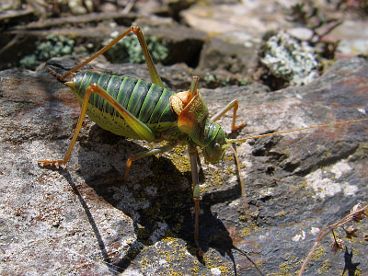
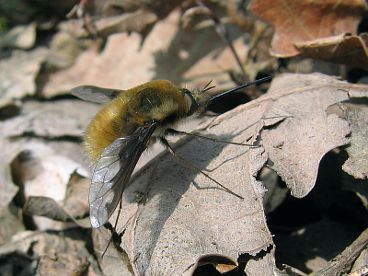
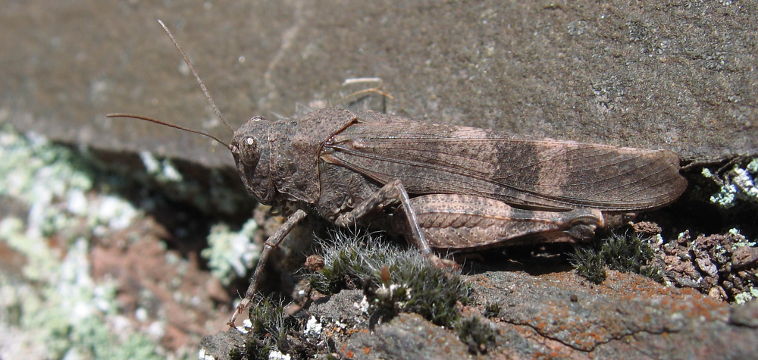
Wildflowers
Each year during spring and summer numerous wildflowers emerge and turn the rocky slopes of the Moselle valley into a sea of colour. Among the most commonly encountered wildflowers in early spring are the handsome Lesser Periwinkle (Vinca minor), the small and inconspicuous Common Dog Violet (Viola riviniana) and the spectacular Common Cowslip (Primula veris) with its characteristic bell-shaped flowers. As typical woodland species they flower at a time when most trees are still without leaves, allowing the sunlight to penetrate all the way to the forest floor.

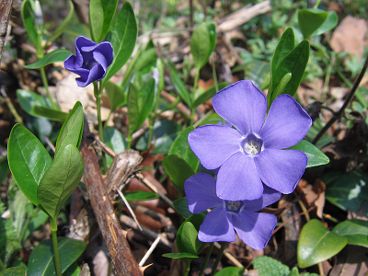
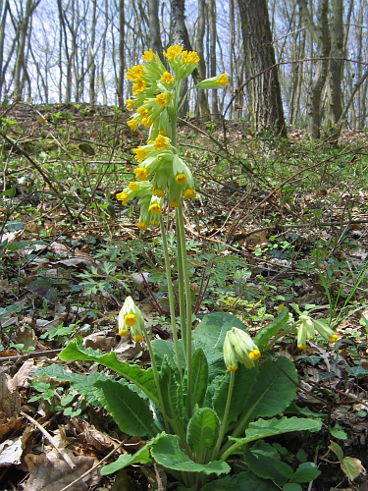
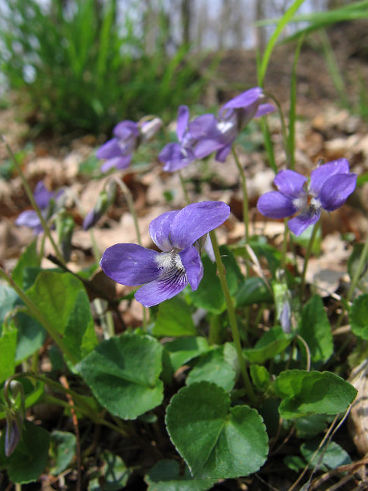
Another herald of spring is the Wood Anemone (Anemone nemorosa) with its characteristic white flowers. It is one of Germany’s most abundant wildflowers and often forms large colonies that can turn the entire forest floor into a carpet of white flowers. Like other spring species, the Wood Anemone benefits from the additional sunlight that reaches the ground in early spring at a time when most forest trees are still leafless.
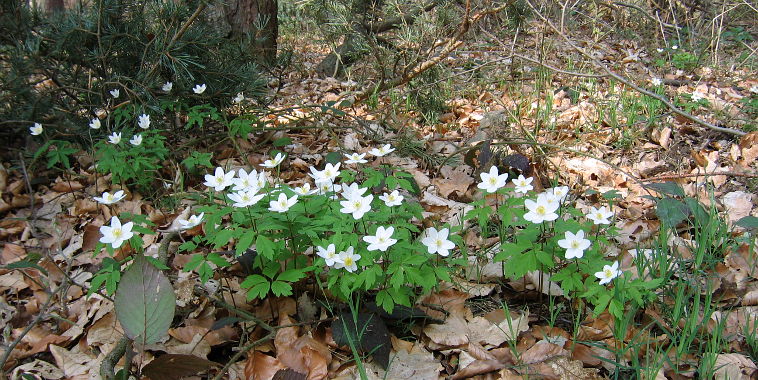
Many more wildflower species can be found along the Moselle valley, in particular during the warmer spring and summer months. A small selection of characteristic species is shown below.
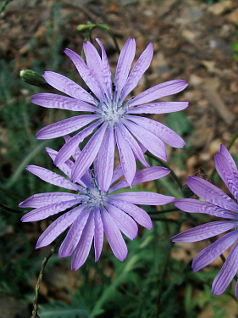
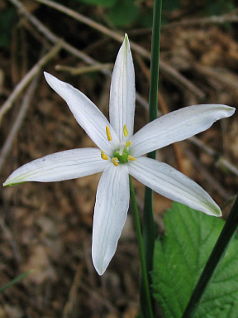
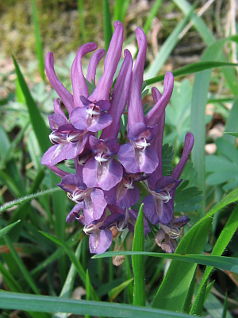
Succulents
The south-facing, hot and dry cliffs of the Moselle valley are a paradise for succulents that thrive in these hostile conditions by storing water in their fleshy leaves. By far the most common of these is the white-flowered White Stonecrop (Sedum album) which also serves as the main food plant for the caterpillars of the magnificent Apollo (Parnassius apollo). Other Sedum species found along the Moselle include the Reflexed Stonecrop (Sedum rupestre) and the Goldmoss Stonecrop (Sedum acre), both of which have yellow flowers.
Another spectacular succulent is the Common Houseleek (Sempervivum tectorum) with its characteristic rosettes of leaves that frequently grow in narrow cracks and gaps in both natural rocks as well as vineyard walls. Its purple flowers appear during the summer and are a delight to see.
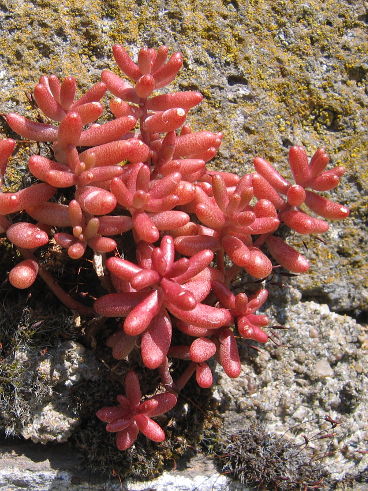
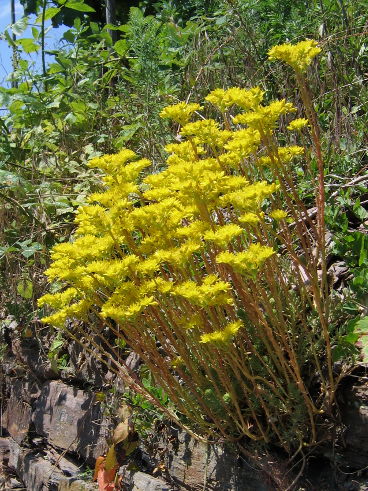
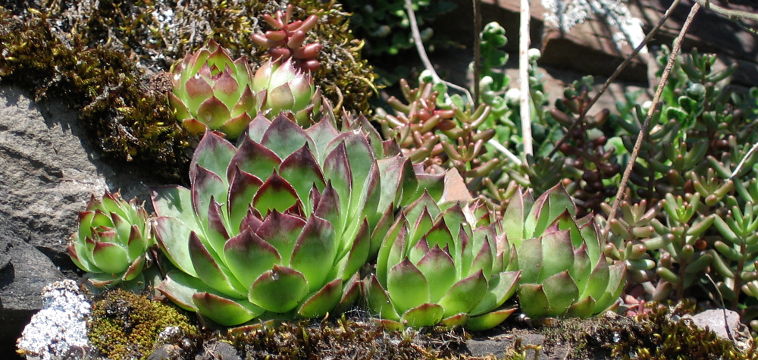
Statistics
List of Butterflies
List of butterfly species that I have encountered in the Moselle Valley so far:
- Papilio machaon
- Iphiclides podalirius
- Parnassius apollo
- Aporia crataegi
- Pieris brassicae
- Pieris rapae
- Pieris napi
- Anthocharis cardamines
- Colias hyale
- Gonepteryx rhamni
- Leptidea sinapis
- Neozephyrus quercus
- Satyrium acaciae
- Satyrium spini
- Thecla betulae
- Callophrys rubi
- Lycaena phlaeas
- Lycaena tityrus
- Celastrina argiolus
- Polyommatus icarus
- Apatura iris
- Limenitis camilla
- Nymphalis polychloros
- Nymphalis io
- Nymphalis urticae
- Nymphalis c-album
- Vanessa atalanta
- Vanessa cardui
- Araschnia levana
- Melitaea didyma
- Argynnis paphia
- ssoria lathonia
- Melanargia galathea
- Aphantopus hyperantus
- Maniola jurtina
- Maniola tithonus
- Coenonympha pamphilus
- Coenonympha arcania
- Pararge aegeria
- Lasiommata megera